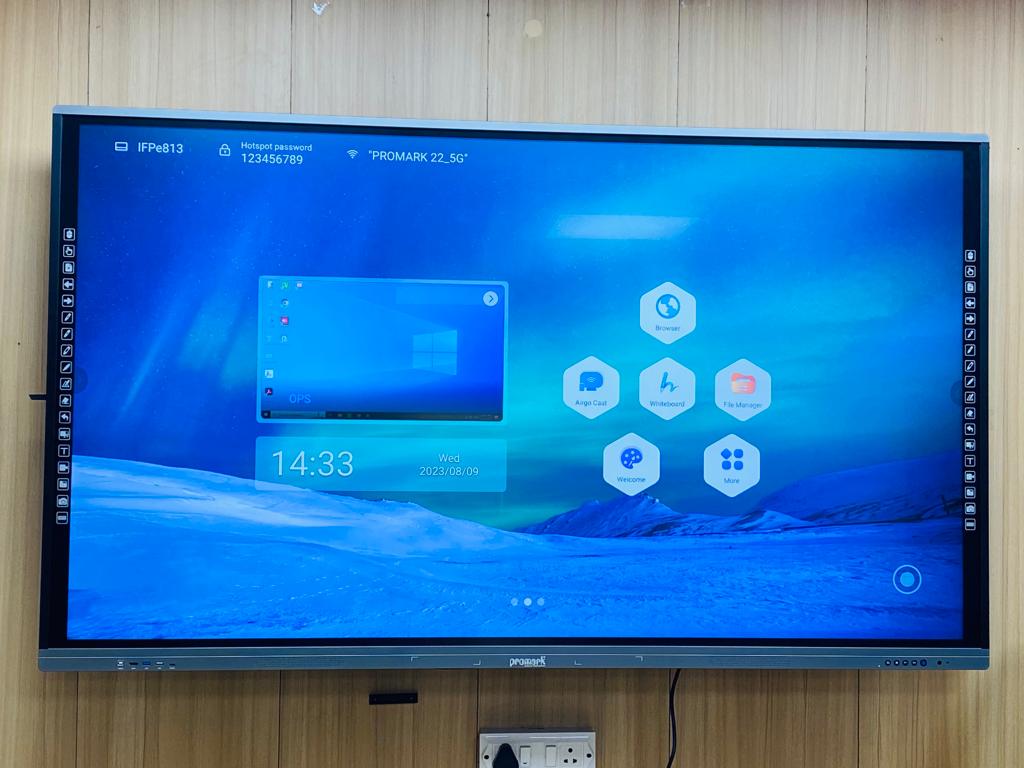Interactive Flat Panels vs. Smart Boards: Unveiling the Differences
Introduction
In the world of modern education technology, terms like “Interactive Flat Panels” (IFPs) and “Smart Boards” often surface in discussions about enhancing classroom interactivity and engagement. While both technologies aim to facilitate dynamic learning experiences, they are not synonymous. In this article, we will explore the distinctions between Interactive Flat Panels and Smart Boards, shedding light on their unique features, benefits, and applications.
Interactive Flat Panels: A New Age of Classroom Technology
Interactive Flat Panels, also known as Interactive Flat Panel Displays (IFPDs), represent a relatively recent innovation in educational technology. They are large, touch-sensitive screens that serve as a digital replacement for traditional whiteboards or blackboards. Here’s how they differ from Smart Boards:
- Form Factor: IFPs are standalone displays. They are essentially large touchscreen monitors that can be mounted on walls or placed on mobile stands. The entire surface of the panel is interactive and responsive to touch or stylus input.
- Technology: IFPs use advanced touch technology, such as capacitive or infrared touch, to detect and respond to touch or pen input. They offer multi-touch capabilities, allowing multiple users to interact simultaneously.
- Integration: IFPs are self-contained units with built-in computing capabilities. They typically run on dedicated operating systems or are compatible with external devices like computers and tablets.
- Connectivity: IFPs come equipped with various connectivity options, including HDMI, USB, and wireless connectivity for seamless integration with other devices and content sources.
- User-Friendly Interface: IFPs often feature intuitive user interfaces with pre-installed software and apps that cater to educational needs. They are user-friendly and easy to navigate.
Smart Boards: The Pioneer of Interactive Whiteboards
Smart Boards, on the other hand, have been around for much longer and represent a different approach to interactive learning technology. Here’s how they differ from IFPs:
- Form Factor: Smart Boards consist of a whiteboard or projection surface connected to a computer or projector. They are interactive in the sense that a digital image is projected onto the board, and users interact with it using a stylus or touch-sensitive pen.
- Technology: Smart Boards rely on digital ink and touch-sensitive surfaces to capture and transmit input to a connected computer. They typically support single-touch interactions.
- Integration: Smart Boards are not standalone units but rather require a computer and projector for full functionality. The computer running Smart Board software interprets and processes the input from the board.
- Connectivity: Smart Boards connect to external devices, such as computers, through USB or other proprietary connections. They rely on external devices for content and application access.
- Software Dependence: Smart Boards depend on dedicated software running on the connected computer to provide interactive capabilities and tools.
Key Differences in Application
The distinctions between IFPs and Smart Boards have implications for their applications in education:
- Versatility: IFPs are more versatile, as they can be used as standalone devices for various applications beyond traditional teaching. They support multiple operating systems and software applications, making them adaptable to different teaching styles and curricula.
- Ease of Use: IFPs are often considered more user-friendly due to their integrated design and user interfaces. They do not require additional equipment like projectors or external computers.
- Interactivity: Smart Boards are primarily interactive whiteboards designed for use in classrooms. They require dedicated software and are specifically tailored for educational purposes.
- Mobility: IFPs can be mounted on mobile stands, making them more mobile and flexible in terms of classroom arrangement. Smart Boards are stationary and require a fixed installation.
Conclusion: Choosing the Right Solution
While both Interactive Flat Panels and Smart Boards contribute to interactive learning environments, they cater to different preferences, needs, and educational settings. The choice between these technologies should consider factors such as budget, classroom layout, mobility, and the specific teaching methods and content that educators plan to use.
Interactive Flat Panels are gaining popularity for their adaptability and user-friendliness. They have become a staple in modern, technology-rich classrooms. On the other hand, Smart Boards, with their history in interactive whiteboard technology, still hold a place in educational settings that require traditional board-like interactivity.
Ultimately, the decision to use Interactive Flat Panels or Smart Boards depends on the unique requirements and preferences of educators, schools, and institutions. Both technologies have their strengths and can significantly enhance classroom engagement and learning outcomes.
if you like our content then visit https://tefwins.com/
People also Read https://clinalleve.mn.co/posts/how-can-a-capacitive-touch-screen-be-triggered-without-human-contact

